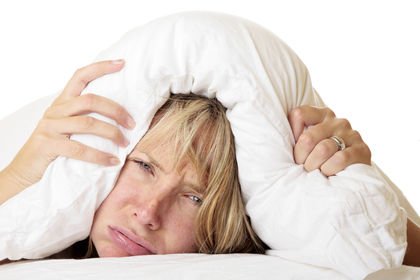Chloral hydrate

Definition
Chloral hydrate is a drug that is used to help sedate
persons before and after surgery, to help relieve anxiety
or tension, and to help promote sleep in persons with insomnia . It is sold in the United States under the brand names Aquachloral and Noctec. It is also available under its generic name.
Purpose
Chloral hydrate is primarily used to help sedate persons, especially children, before and after surgery. It has a calming effect on persons as they prepare for surgery. It is also used to help persons who have sleep difficulties fall asleep. Chloral hydrate can be used to help calm tense or nervous persons.
Description
Chloral hydrate is classified as a sedative-hypnotics drug. The entire mechanism by which chloral hydrate works is not completely understood. It is believed that a chemical produced by chloral hydrate called trichloroethanol causes a mild depressive effect on the brain .
Recommended dosage
Chloral hydrate is available in oral and suppository forms. The oral form includes both capsules and a syrup. Adults usually receive 500 mg–1000 mg taken 15–30 minutes before bedtime or one to two hours before surgery. These dosages are for hypnotic effects. For sedative effects, 250 mg is usually taken three times daily after meals. Total daily dosage should not be more than 2 g (2000 mg). The hypnotic dose for children is usually 50 mg for every kilogram of body weight. The maximum amount per single dose is 1 g. Daily dosage is usually divided into several smaller doses and taken throughout the day. The sedative dose is typically one-half of the hypnotic dose. The syrup form should be combined with a half glass of fruit juice or water. The capsules should be taken with a full glass of water or juice to help prevent stomach upset.
The typical hypnotic dose using suppositories is 10–20 grains before bedtime in adults. The sedative dose for adults is 5–10 grains three times daily. The total maximum suppository dose should not be more than 30 grains per day. The hypnotic suppository dose in children is 5 grains for every 40 pounds (18.2 kg) of body weight. The sedative dose is one-half of this amount. The amount of absorption of these suppositories is primarily based on how well the body is hydrated and not on body temperature. It helps to moisten the suppository and finger before inserting the suppository.
Precautions
The treating doctor needs to check the progress of any patients taking this drug for more than a few days to ensure significant side effects are not developing. Patients should not stop taking chloral hydrate suddenly. Instead, the dosage should be gradually decreased over time. Chloral hydrate can produce increased effects when combined with other central nervous depressants such as alcohol, antihistamines, and tranquilizers. The combination of chloral hydrate with these agents can cause significant drowsiness. Chloral hydrate can sometimes cause persons to become drowsy, lightheaded, or dizzy. Chloral hydrate should generally not be used in patients with a history of severe kidney disease, severe liver disease, or those with a history of significant heart disease.
Chloral hydrate should be used with great caution only where necessary in persons with a history of heart disease, gastrointestinal problems, porphyria, drug abuse, and in the elderly. Chloral hydrate should be used with caution in pregnant women and in women who are nursing. Chloral hydrate, as with most drugs, can be taken in excess to the point of overdose. Signs of overdose include difficulty in swallowing, extreme weakness, confusion, seizures , extreme drowsiness, low body temperature, staggering, changes in heart rate, and breathing problems.
Side effects
Uncommon but serious side effects of chloral hydrate use include skin rash or hives. Even more rare side effects include confusion, hallucination, and excessive excitement. The development of any of these side effects should be promptly reported to a doctor.
Less serious but more common side effects of chloral hydrate use include nausea, stomach pain, and vomiting. Less common and not particularly serious side effects include diarrhea, lightheadedness, drowsiness, and clumsiness.
Interactions
Chloral hydrate should not be combined with alcohol because of additive depressant effects on the central nervous system. This combination can lead to significant drowsiness. Likewise, chloral hydrate should not be combined with the antidepressants drugs called tricyclic antidepressants because of the additive depressive effect. Chloral hydrate should not be combined with the blood-thinning drug called warfarin. The combination of these drugs may require adjustments in the amount of the warfarin taken.
Resources
BOOKS
Consumer Reports Staff. Consumer Reports Complete Drug Reference. 2002 ed. Denver: Micromedex Thomson Healthcare, 2001.
Ellsworth, Allan J., and others. Mosby's Medical Drug Reference. 2001-2002. St. Louis: Mosby, 2001.
Hardman, Joel G., Lee E. Limbird, eds. Goodman & Gilman's The Pharmacological Basis of Therapeutics. 10th ed. New York: McGraw-Hill, 2001.
Mosby's GenRx Staff. Mosby's GenRx. 9th ed. St. Louis: Mosby, 1999.
Venes, Donald, and others, eds. Taber's Cyclopedic Medical Dictionary. 19th ed. Philadelphia: F. A. Davis, 2001.
Mark Mitchell, M.D.
Comment about this article, ask questions, or add new information about this topic: